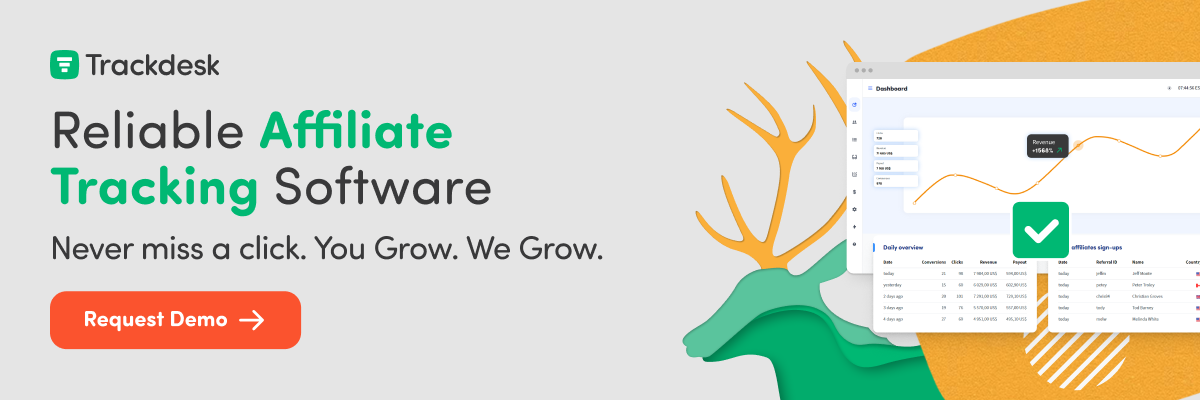
How to Create an Affiliate Program That Achieves Your Goals
Here’s how to deliver results and sustainable growth when you’re about to start with affiliate marketing.
An affiliate program can be a powerful way to grow your business. It is an agreement where brands work with affiliate publishers to promote their product or service and send traffic their way in exchange for a commission.
In affiliate marketing, partners like content creators promote your products on their website through affiliate links. When someone makes a purchase through that link, your affiliates get a commission.
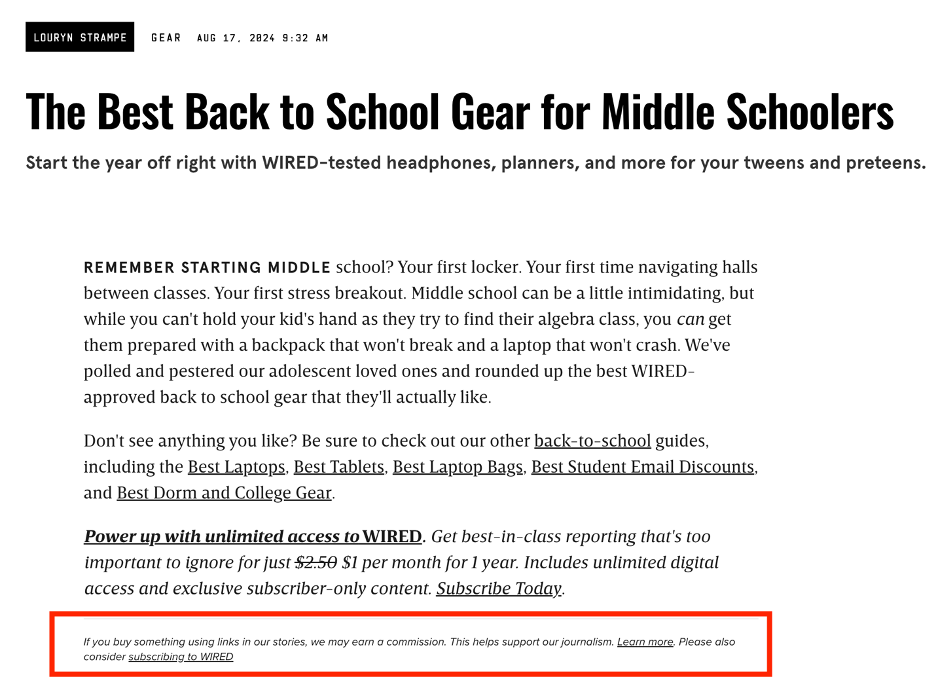
https://www.wired.com/gallery/middle-school-gear/
If you’re planning to create an affiliate program, one of the biggest questions is whether or not it’s the right move for your business. You can learn how affiliate marketing differs from other strategies like referral marketing, which this detailed Attrock guide explains, to help you determine which approach aligns best with your goals. Additionally, you have to assess aspects like the quality and appeal of your product or service, your capacity to scale, your current market performance, and your target audience.
Before you create an affiliate program, ask yourself the following questions first:
- Is affiliate marketing a standard practice for my business or industry? This will help you gauge your affiliate program’s potential to succeed. If your competitors are running successful affiliate programs, then it’s an avenue that’s worth exploring.
- Can I afford it? When done right, an affiliate program can be a cost-effective way to market your brand. However, you still have to account for costs, such as product giveaways and paying your affiliates.
- Can I manage the program effectively? Do you have enough people to help you run the program? Can you scale your operations to handle more orders?
- Am I confident in the products/services I’m offering? Is your product appealing enough to affiliates that they want to promote it? Do you have a sizeable audience that’s interested in what you have to offer? Is your product or service capable of fulfilling a need?
Still, the question remains: Is it right for my business?
Affiliate marketing can be a potentially great channel if you consistently get positive feedback about your brand. If your margins allow for motivating affiliate commissions and you have someone to take care of affiliate management, then it’s definitely worth a shot.
Once you’ve determined that creating an affiliate program is worth it and beneficial for your business, it’s time to define your goals.
Aside from key considerations, this guide will give you everything you need to know to create an affiliate program as a beginner. Want to learn more about what you need to do before you create an affiliate program? Check out our pre-launch checklist to help you launch a successful affiliate program.
Set Clear and Measurable Goals
You have to first understand that success takes time. It involves careful planning and committing to SMART goals that help you stay on track and get the best results.
- Your goal should be well-defined and clear. Instead of saying you want to increase revenue, specify an amount you want to generate monthly, quarterly, or annually. With affiliate sales, determine the number of affiliate-driven sales within a month or a quarter, for example.
- Your goal must also be quantifiable. This allows you to monitor progress against your key performance indicators (KPIs). For example, you want to recruit 15 new affiliates or achieve a 20% conversion rate for the second quarter.
- Are your goals realistic? Will you be able to achieve them within a certain period?
- Your goals must align with your affiliate program as well as your brand objectives. For example, you want to position your brand as an authority in your niche. Your plan is to provide your audience with value-add resources like interviews with experts, how-to guides, and educational articles.
- Time-Bound. When creating a timeline for each goal, make sure that it’s realistic. It should give you enough leeway to properly plan and execute your tactics. Having a time frame to stick to creates a sense of urgency and can encourage you to become more productive.
A SMART affiliate program goal may look like:
- By the end of 2024, build a network of at least 10 great affiliate partners who each drive more than 10 conversions per month.
- Hit $5K in monthly recurring revenue (MRR) from affiliate sales within a 6-month period.
Identify Your Target Audience
Knowing your target audience, including their purchasing behaviour and interests, helps you tailor your affiliate marketing strategies and messaging so that these align with your audience’s needs and preferences. This potentially drives conversions and revenue from affiliate marketing.
Understand Your Ideal Customer Profile
Who is the target market? What are their needs and interests?
To uncover insights about your ideal customer, perform market research and use analytics tools. These provide data-driven insights into your audience, including their behaviours, demographics, and engagement with your brand.
Create customer or buyer personas. These are representations of your ideal customer. To create a buyer persona, use the data you’ve gathered from your market research, such as their challenges, interests, and demographics. Creating buyer personas is crucial to personalization, which is key to turning buyers into repeat customers (96% of marketers) and increasing sales (94%).
By focusing on personalisation in affiliate marketing, you’re in a better position to meet customer expectations. You’re letting customers know that you understand them, which can help nurture customer trust. Creating highly targeted campaigns that resonate with your audience can boost engagement and conversion rates.
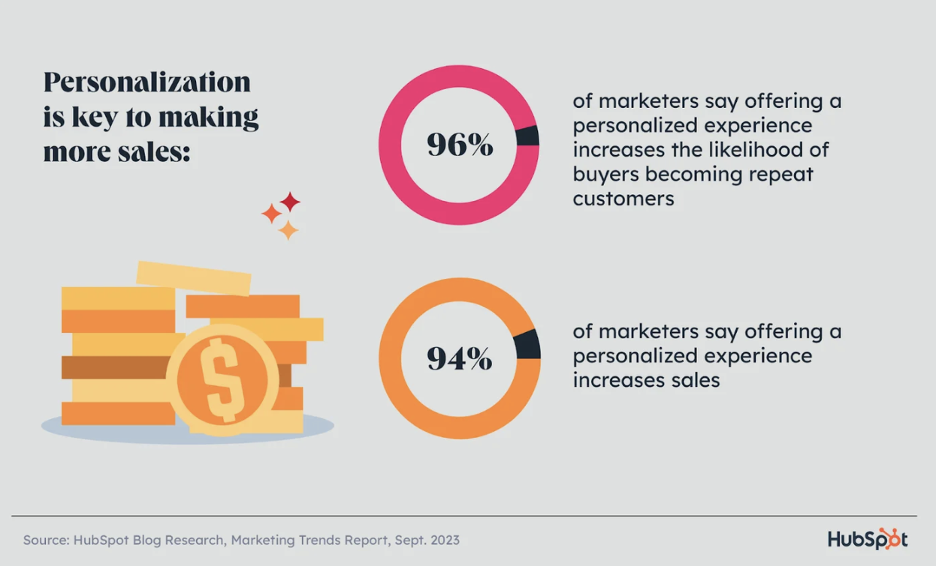
https://blog.hubspot.com/marketing/buyer-persona-research
Alternatively, look into segmentation and targeting. Create negative buyer personas, which represent audiences you don’t want as customers. Negative buyer personas help you narrow down your affiliate marketing strategies so you can focus on your ideal customers instead.
Identify Potential Affiliate Partners
Who are the target affiliates? What types of affiliates do you want to work with? Are you looking for affiliates with a large following or are you keen on working with affiliates with smaller but more engaged audiences?
Finding the right affiliates is vital to your program’s success. The right affiliates can boost your brand credibility, reach your target audience, and create engaging content that will encourage consumers to convert. They can also provide you with insights about your target audience since they interact with them, as well as feedback you can use to improve your affiliate marketing strategies.
Start by researching within your industry. When choosing affiliates, make sure to pick those who align with your brand values and share the same target audience as your brand. Checking your competitors’ affiliate programs also helps. This lets you identify the types of affiliates they’re working with and determine whether or not adopting a similar approach could benefit your business.
You can also look into affiliate networks like CJ Affiliate or ShareASale. These make finding affiliates easier but you’ll also be up against some competition, given that your program will be listed alongside other brands.
Analyse Your Competitors' Affiliate Programs
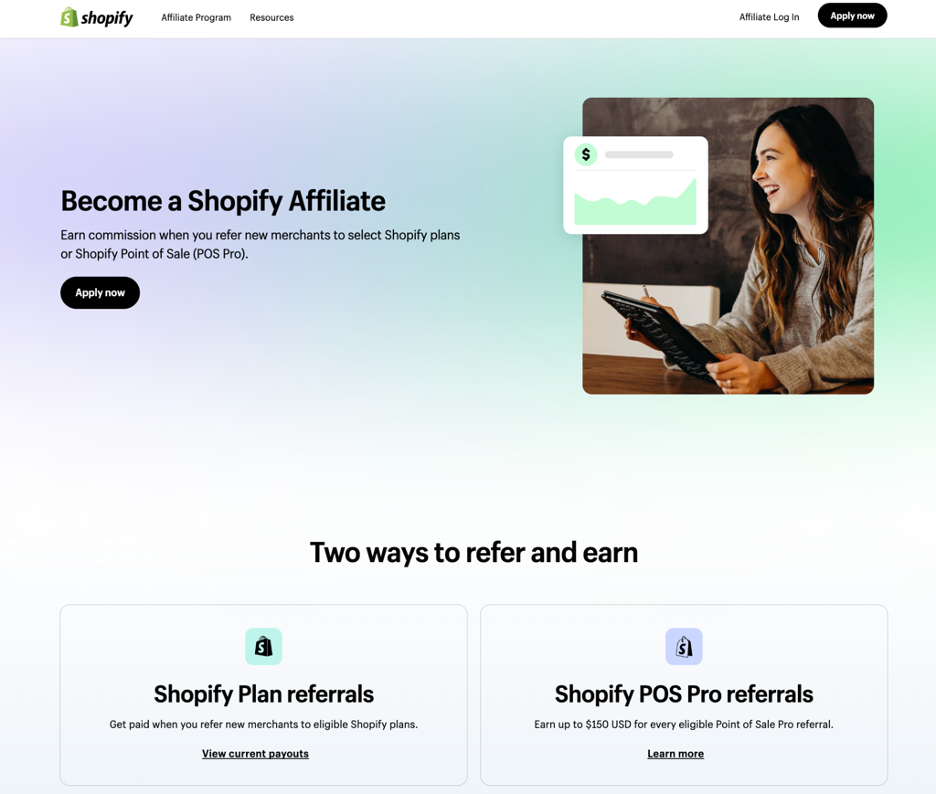
https://www.shopify.com/affiliates
Around 81% of brands use affiliate programs to build brand awareness and drive sales.
Competitive analysis gives you insights into their affiliate marketing strategy. These help you optimise your own affiliate program, identify opportunities that give you a strategic advantage, and find areas for improvement.
Analysing your competitors also lets you identify any potential market gaps you can explore, allowing you to position your brand as a more viable and complete solution.
- Research your competitors' affiliate programs. Make a list of your top competitors and assess their affiliate landing pages. Take note of helpful information like their commission rates, tracking methods, and their program’s unique value proposition.
- Identify their strengths and weaknesses. What makes your competitors’ affiliate programs effective? What’s keeping it from growing? Knowing their strengths and weaknesses lets you refine your value proposition and differentiate your brand from your competitors.
Say you’re an online retailer that wants to improve your commission structure. You start by analysing the commission structures of your top competitors like Amazon. Then, you identify what percentage of sales your competitors offer as commissions, the rates they offer for different product categories, and what commission models they use. To further enhance your online retail business, consider implementing AWS cost optimization strategies and enhancing operational efficiency.
Or you want to see how your affiliate website can add value to your audience while gaining their trust and encouraging them to support your work. You can check out how different affiliate sites approach this.
Take Wirecutter for example. It’s a product review website that helps consumers make informed decisions. What makes their reviews—which often contain affiliate links—so effective is that they combine years of experience with research. Its articles also get input from experts in various fields to give them more depth. According to its website, the team behind Wirecutter values reader trust. By giving its audience transparent and in-depth reviews, Wirecutter encourages them to support its work.

https://www.nytimes.com/wirecutter/reviews/best-smart-smoke-alarm/
By comparing these specific aspects, you can adjust your commission rates to make them more competitive and appealing to affiliates.
Define the Program's Key Aspects
Start by determining the products or services to include in the program. What problems can these solve? Is your product or service appealing to your target audience? Will affiliates want to promote it? Choosing the right products or services can help boost your credibility, drive conversions, and increase your revenue.
You must also decide on commission structures, incentives, and payout schedules. Your commission structure can make or break your affiliate program. Finding one that works for both you and your affiliates ensures that your program is sustainable and profitable.
However, deciding on which one to use can be tricky because you have several commission structure types and you need to tie your commission rates with your program goals. Knowing industry benchmarks for commission rates also helps. Factor in aspects like your profit margins, product prices, and competitors’ commission rates. We’ve created a guide to help you set commission rates that don’t eat into your profits.
Once you’ve decided on a commission structure, you need to set clear terms and conditions for affiliates. This helps them get a better understanding of your affiliate program and commission rates, as well as what they need to do to earn commissions.
Choose the Right Affiliate Software
There are several types of affiliate software. You have solutions for tracking and analytics, affiliate management, and automation. Using affiliate marketing software allows you to manage your program more efficiently, track your program’s performance, and leverage data-backed insights.
When selecting software that best fits your business, keep these considerations in mind:
- Compatibility with your current tech stack
- Ease of use, accessibility options, and user interface
- Amount of control it provides, along with flexibility and customisation
- Customer support services, such as a 24/7 hotline
- Software costs vs. budget
The best way to know if a solution is the best fit for your business is to sign up for a free trial. This way, you can explore all its features and figure out how it works. Trackdesk offers a free plan that comes with an array of features like custom cookie length, mass payment methods, and custom reports.
Need to unlock more advanced features like custom domain and branding, fraud protection, and custom affiliate onboarding? Trackdesk offers Starter, Business, and Enterprise plans. With the Starter and Business plans, you get a 14-day free trial so you can explore each plan’s features.
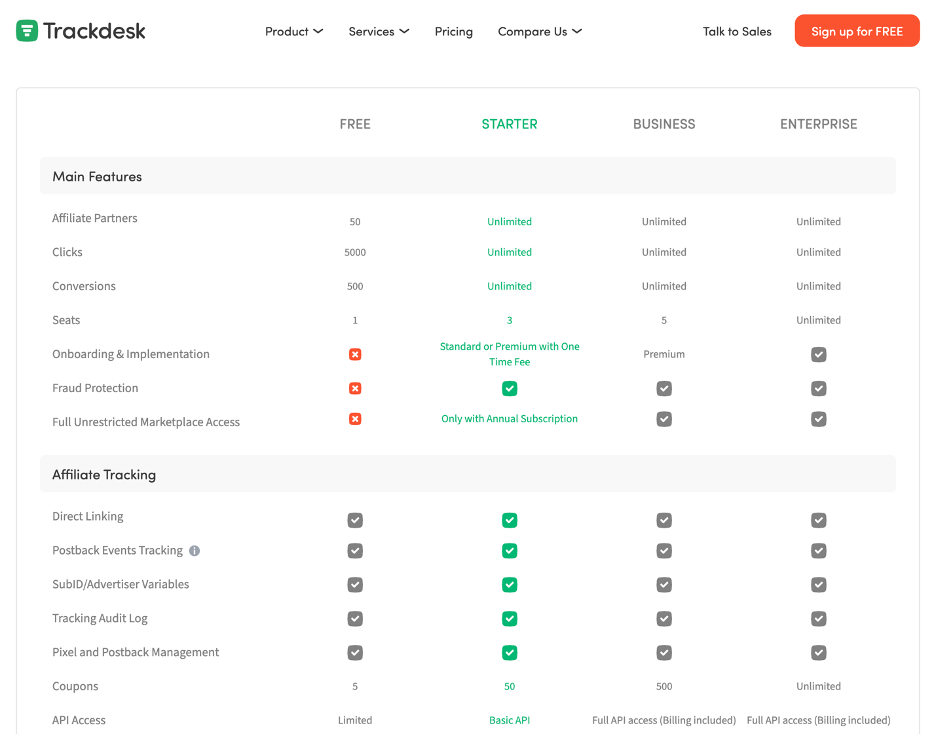
Create a Comprehensive Affiliate Onboarding Process
Affiliate onboarding is a crucial step that helps your affiliates get acquainted with your program. A good onboarding process is straightforward and provides affiliates with guidance and support from the get-go. It paints a clearer picture of your brand, goals, and values. It can help with affiliate retention when done well.
During your onboarding process, you must provide the necessary tools and resources. You should also develop and distribute onboarding communications like emails or newsletters. Attach helpful resources like how-to articles, video guides, and downloadable creative assets. Also, look into providing training modules and regular updates through a dedicated channel for affiliates.
Set expectations and communication channels. You can do this by providing them with an email for affiliate-related matters or through platforms like Slack or Discord.
For example, you can send an email to your affiliates (using a dedicated email) letting them know that you can meet them via a video call for the onboarding process.
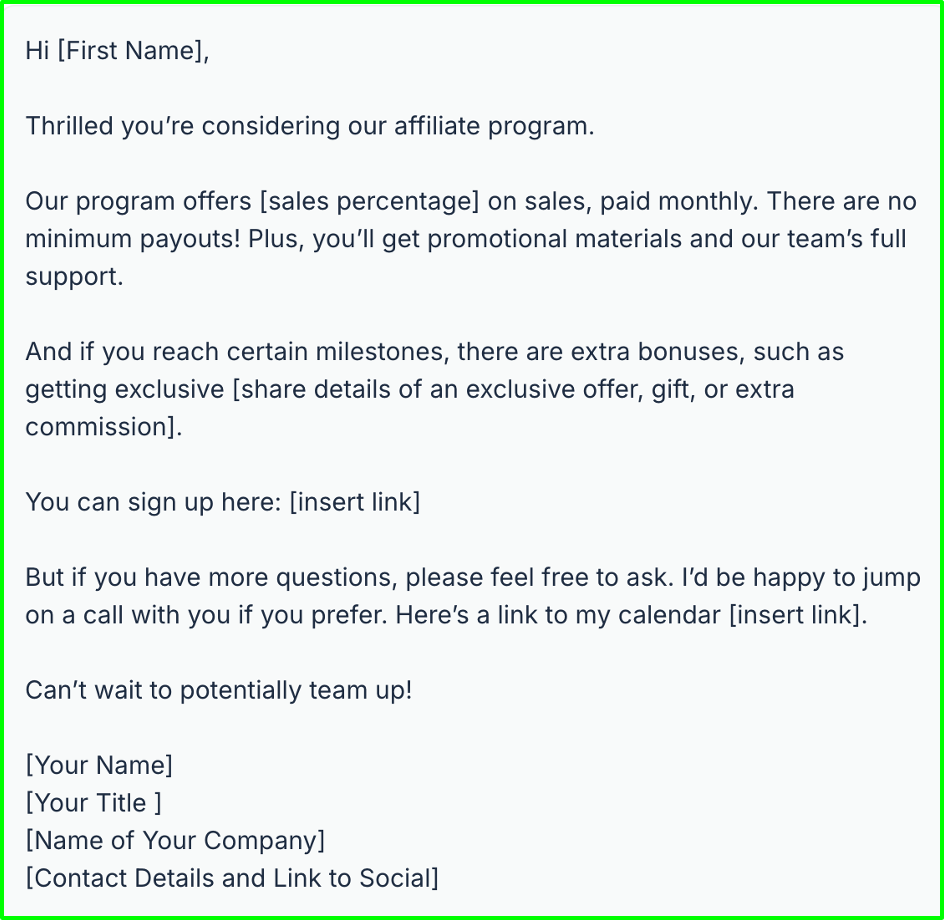
https://mailtrap.io/blog/affiliate-marketing-email-templates/
Recruit the Right Affiliates
The right affiliates play a key role in growing your brand and your affiliate program. They can target new customers, adapt to changing affiliate marketing trends, and help convey your message to the right audiences.
To recruit the right affiliates, start by identifying what your ideal affiliate is.
For example, if you’re selling eco-friendly cleaning products, then focus on looking for affiliates who work within that niche like sustainability advocates or eco-conscious content creators. Make sure that these affiliates align with your brand, including its values, goals, and messaging. While doing online searches can help, it’s also good to consider other ways to reach out and contact potential affiliates, such as through online forums, industry events, or dedicated communities.
We’ve created guides that provide insights and actionable tips on how to find the right affiliates, manage them, and more. Check out our guides:
- Master Affiliate Management: 11 Tips for Your Program Growth
- How to Recruit Affiliates for High-Impact Partnerships
- How to Create an Affiliate Landing Page
- How to Craft Compelling Affiliate Deals
- How to Scale Affiliate Recruitment
- How to Prevent Affiliate Fraud
Educate and Motivate Your Affiliates
Building thriving affiliate relationships is crucial to growing your affiliate program. Keeping your affiliates engaged through consistent and effective communication helps cultivate healthy affiliate relationships. This also unlocks several benefits for your brand, including increased brand credibility, long-term affiliate partnerships, and continued growth for both you and your affiliates.
The tips below can help you educate and motivate your affiliates to cultivate thriving and impactful partnerships.
Offer Incentives and Bonuses for Top-Performing Affiliates
Aside from increasing their commissions or offering time-specific commission boosts, offering performance-based incentives motivates top performers and incentivizes their achievements. You can also look into featuring top-performing affiliates on your website or social media channels.
Provide Product Samples
Sending out product samples does three things: it lets your affiliates test your products, helps show your appreciation, and gives them some extra items to use in contests or giveaways.
Regularly Check in With Your Affiliates
Proactive communication helps keep your affiliates motivated and engaged. Schedule regular meetings (weekly, monthly, or quarterly) with your top-performing and high-value affiliates to discuss your plans, talk about their challenges, and identify new opportunities for affiliate marketing. Ask your affiliates for feedback and let them know that you’re there to provide them with the support or marketing materials they need.
Provide Access to Useful Resources
Equipping your affiliates with the right tools is one way to empower them and enable them to promote your products effectively. Look into offering resources like training materials, and assets for content creation (images, videos, or ad copy templates). You might also consider providing them with a platform or tools to make their marketing activities easier. Asset management software can help streamline the tracking and management of your office inventory, ensuring that all resources—from marketing materials to essential office equipment—are organized and accessible, allowing your team to focus more on executing strategies and less on logistics.
Monitor Your Affiliate Program's Performance
Tracking your program’s performance helps you make data-driven decisions that you can then use to optimise campaigns. Use analytics tools to track affiliate performance and KPIs like clicks, conversions, and commission rates.
Tracking the number of clicks gives you an idea of your campaign’s reach and effectiveness. Your conversions show you the effectiveness of your messaging while analysing your commission rates gives you an idea of whether or not your current commission structure is working based on the number of sales each affiliate generates for a given period.
Trackdesk lets you track your program’s performance, manage affiliates, and more. Features like automation and affiliate tracking help you scale your program faster and develop a more effective affiliate program.
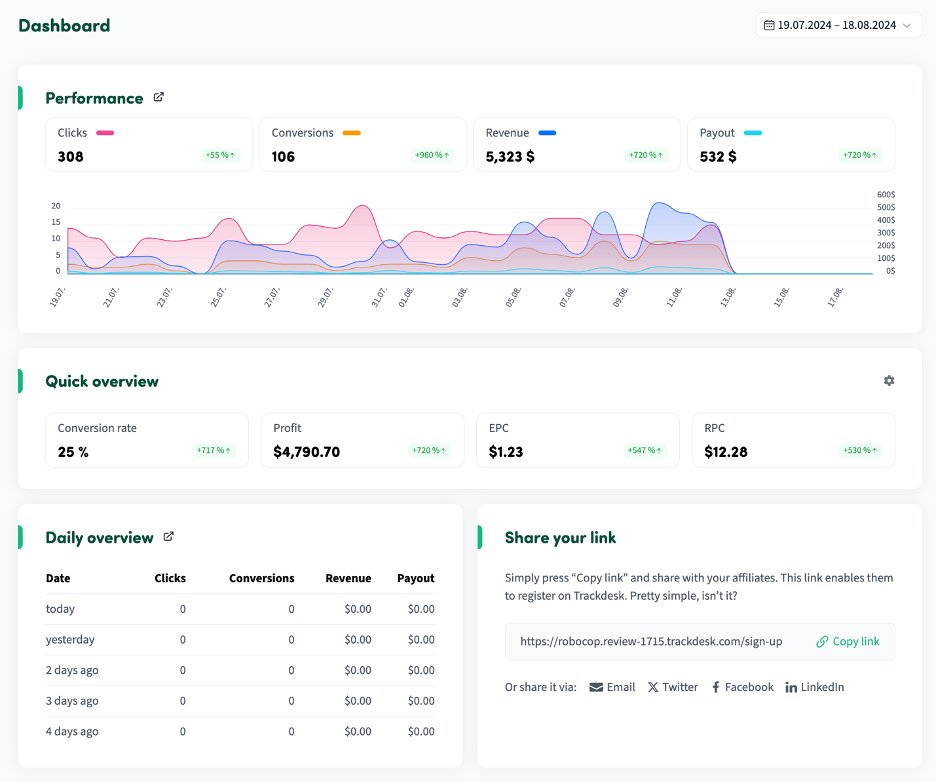
The dashboard gives you an overview of key performance data like clicks, conversions, revenue, and payouts. It also gives you a quick glimpse into your best-performing affiliates, latest conversions, best-performing offers, and more.
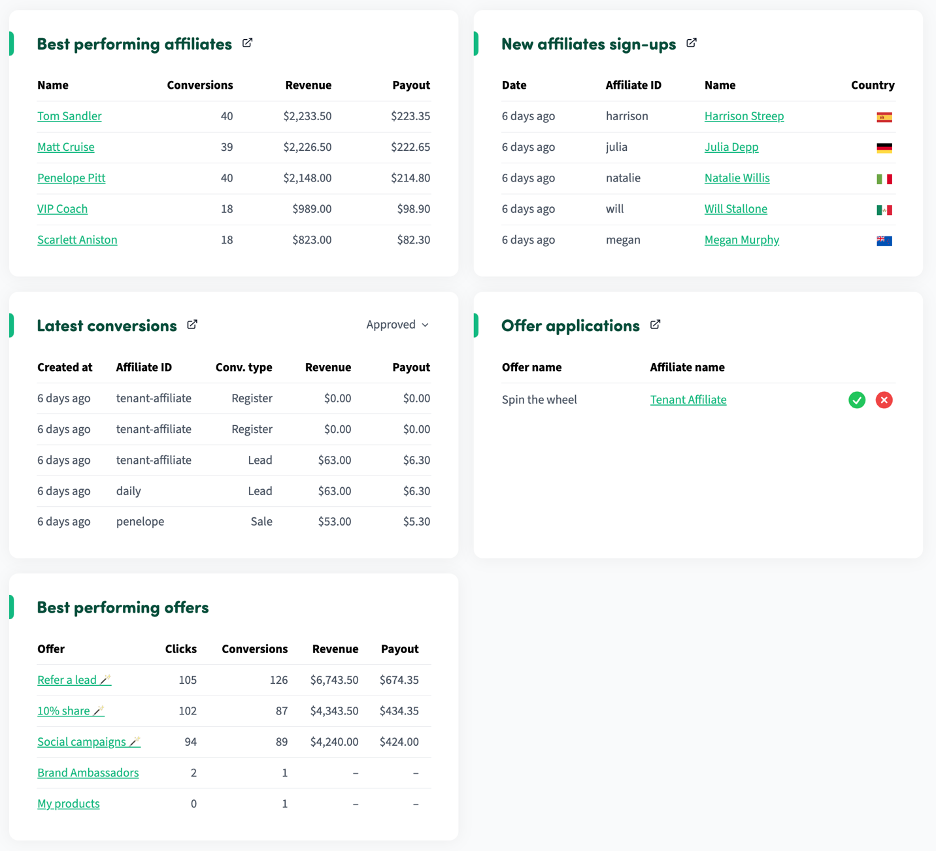
Identifying top-performing affiliates and campaigns lets you optimise campaigns and reward your best affiliates.
Never Stop Optimising Your Program
Managing and growing your affiliate program is an ongoing process. To maintain your strategic advantage, you need to conduct split tests to figure out which aspects deliver the best results. You must also stay on top of industry trends and new technologies. This lets you future-proof your affiliate program and cultivate its sustainability.
You also need to:
- Regularly review and update your affiliate p Regular reviews (monthly, quarterly, or annually) help you adapt to market changes, identify what’s working and what isn’t in your program, and maintain the quality of your affiliates. These also ensure that your affiliate program is capable of supporting your evolving business needs and goals. Reviews and updates to your program also help you comply with legal requirements and regulations like the Federal Trade Commission’s endorsement guides.
- Solicit feedback from affiliates and make necessary a Your affiliates’ feedback helps you identify areas for improvement and issues with your program. For example, if they’re struggling with promoting your products, you can use their suggestions to provide them with better tools or resources. Valuing your affiliates’ feedback also shows that you appreciate them. This, in turn, can improve affiliate retention because your affiliates know that you’re listening to their concerns and making necessary improvements to the program.
That's it. You're now equipped with all the knowledge you need to successfully kick your affiliate program off. Good luck!

I have a passion for storytelling. I believe that a good story delivers value while capturing, influencing, and sustaining its intended audience. This has always been, and always will be, my primary aim as a writer.
